How To Choose The Right Optical Window Sheet For Your Project?
Introduction
An optical window is an element that transmits light and is typically composed of transparent materials such as glass, quartz and standard optical glass. Its primary function is to protect internal components and to convey optical signals. In optical devices, optical windows are used to protect lenses, filters, optical fibres and other components from external environmental influences and physical damage, for example dust, rain and oxidation. In addition, optical windows can adjust the light flux and spectral distribution according to specific requirements and control the direction and angle of incidence of the light beam.
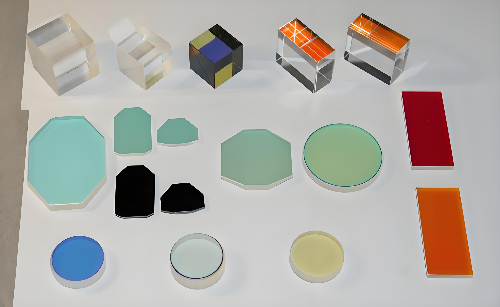
Fig. 1 Various optical window sheets
Different application scenarios impose almost contradictory requirements on optical window films. They must exhibit excellent optical transmittance while withstanding extreme environmental conditions. In spacecraft, they are required to resist cosmic radiation and drastic temperature variations; in deep-sea probes they must withstand high water pressure and salt spray corrosion; and in medical endoscopes, biocompatibility must be maintained while ensuring accurate imaging. Scientists control the crystal structure, the coating process and the chemical stability of the materials so that each optical window is precisely tailored to the specific challenges of its application.
High-energy lasers, in particular, require sapphire windows capable of withstanding high temperatures and radiation. Deep-sea detectors utilise blue sapphire glass due to its pressure and corrosion resistance, while medical endoscopes employ calcium fluoride crystals for their excellent biocompatibility. From capturing starlight in space telescopes to analysing cell structures in microscopes, and from solar collectors to infrared sensors, the material science and design of optical window sheets are inextricably linked with the precision, stability and longevity demanded by modern optical systems.
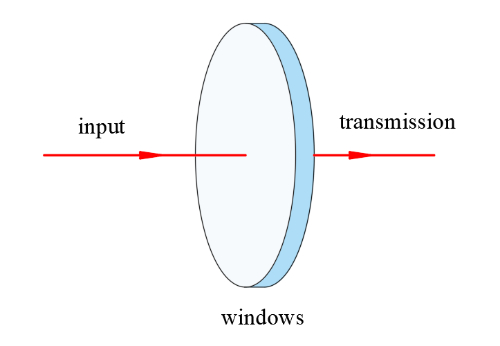
Fig. 2 Principle of optical windows
Factors to Consider When Selecting Optical Window Sheets
Material Type
The choice of material for optical window sheets requires a balance between optical performance, environmental resistance, mechanical strength and cost efficiency. Optical glass (for example, BK7, fused silica) is often preferred for general purposes due to its high light transmittance from the visible to the near-infrared region and its competitive price, although its temperature resistance (typically <500°C) and impact strength are limited. Fused silica, made from ultra-high purity silicon dioxide, achieves a broad spectrum of UV–IR transmission and is suitable for extreme applications such as high-energy lasers and observation windows in spacecraft owing to its high temperature resistance (>1000°C) and ability to withstand thermal cycling. Sapphire (monocrystalline aluminium oxide) features a Mohs hardness of 9 – second only to diamond – and can transmit light from the UV region to the mid-infrared (0.15–5.5 μm); it is therefore used in deep-sea probes, armoured optics and environments subject to heavy abrasion. Its high refractive index must be optimised through coatings to reduce reflective losses. Technical polymers (for example, PC, PMMA) are indispensable in weight-sensitive applications such as drone optics and portable devices owing to their low weight, impact resistance and suitability for injection moulding, although their temperature resistance (generally <120 °C) and chemical stability limit them in high-end applications. Certain scenarios also require custom materials: for instance, calcium fluoride crystals are applied in medical endoscopes because of their biocompatibility and mid-infrared transmittance, while zinc selenide is selected for long-wavelength infrared windows in CO₂ laser systems. In material selection, the essential principle is to meet the core requirements – trading off mechanical strength against extreme light transmittance and balancing cost against environmental stability – with modern coating technologies extending material performance limits.
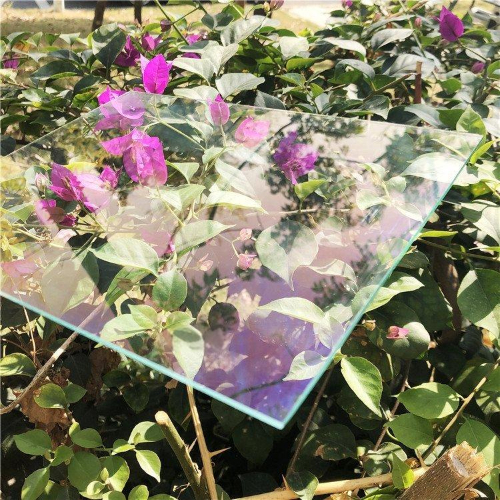
Fig. 3 Optical glass with high light transmittance
Thickness
The thickness of an optical window is a key variable affecting the opto-mechanical coupling properties of a material. In terms of mechanical strength, the thickness follows the equation for the deflection of thin plates in material mechanics (δ ∝ P·L³/(E·t³)), and the bending strength is inversely proportional to the cube of the thickness. Consequently, a 25% increase in thickness improves resistance to deformation by approximately 95% while increasing weight linearly. In terms of optical performance, thickness directly affects the optical path length – if the window thickness exceeds λ/(2Δn) (where λ is the wavelength and Δn is the refractive index inhomogeneity), wavefront aberrations may occur, particularly in high-power laser systems where excessive thickness exacerbates the thermal lens effect (thermal focal length f ∝ κ·t/(α·P), with κ representing thermal conductivity, α the absorption coefficient and P the power). The transmission follows a non-linear relationship: according to the Beer–Lambert law, the transmittance T = (1–R)²·e^(–αt) (with R representing the surface reflectance and α the absorption coefficient), and with increasing thickness, the effect of material absorption (the α-term) is enhanced. For example, the transmittance of a 5 mm thick quartz window in the ultraviolet (200 nm) decreases by up to 40% compared with a 1 mm thickness. Therefore, the optimisation of thickness requires a Pareto-optimal balance between pressure resistance, aberration control and light transmission.
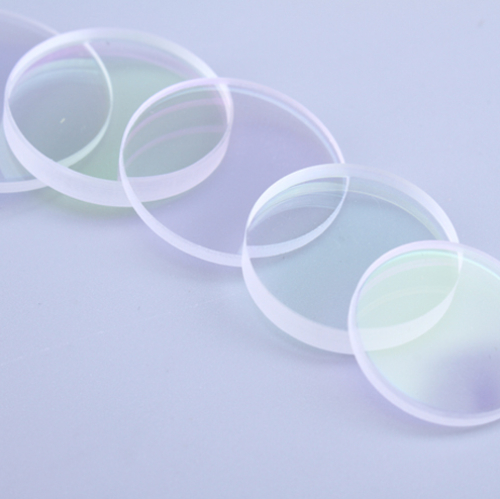
Fig. 4 Quartz window sheets of varying thicknesses
In extreme pressure scenarios (for example, a submersible operating at a depth of 5 000 m), the window must satisfy the collapse pressure formula Pcollapse = K·E/(1–ν²) – (t/D)² (where K is a form factor, ν is Poisson’s ratio and D is the diameter). Typically, monocrystalline sapphire with a thickness of 8–15 mm and a compressive strength of 3.2 GPa is used, with thickness designed to withstand a hydrostatic pressure of 60 MPa. Standard optical systems (such as microscope objective protection windows) employ 1–3 mm thick BK7 optical glass; this thickness satisfies the λ/4 surface flatness requirement (PV value <0.5 μm) and keeps the system weight within 0.5% of the specified load. For CO₂ high-energy lasers (wavelength 10.6 μm), 0.5–1 mm thick zinc selenide windows are standard; this thickness limits thermally induced focal shifts to less than 10% of the Rayleigh range (ZR = πω₀²/λ) and guarantees a transmission of over 99% (achieved by quarter-wave antireflection coatings). In aerospace applications, thickness selection also takes into account vibration modes: quartz windows for typical satellite optical payloads are 2 mm thick, ensuring that their first-order resonance frequency avoids the broadband vibration range of 20–2 000 Hz during rocket launches. Such precise thickness adjustment represents a design approach that spans from intrinsic material properties to system-level construction.
Optical Properties
The transmittance, absorbance and reflectance of an optical window define its optical performance. According to the Beer–Lambert law, the transmittance T = (1–R)²·e^(–αt) (with R representing surface reflectance, α the absorption coefficient and t the thickness). To achieve a transmittance in excess of 90% in the ultraviolet range (200–400 nm), fused silica (with α < 0.1 cm⁻¹ @200 nm) and calcium fluoride are preferred, whereas standard optical glass is unsuitable due to absorption peaks caused by iron ion impurities (α > 1 cm⁻¹). For infrared windows (3–12 μm), CVD-grown ZnS maintains a low absorption (α < 0.02 cm⁻¹ in the long-wave infrared, 8–12 μm), while germanium exhibits a transmittance of over 99% at 10.6 μm. However, germanium’s temperature-dependent absorption coefficient (α increases exponentially with temperature) necessitates thermoelectric cooling.
In ultraviolet protection applications (for example, UV lithography), fused silica substrates with an MgF₂ antireflection coating (reflectance <0.5% at 193 nm) are used, with a tightly controlled hydroxyl content (<1 ppm) to suppress the absorption band at 248 nm. Visible windows (for instance, camera lenses) are often made from BK7 glass (with transmittance >92% in the 400–700 nm range) in combination with a broadband AR coating (reflectance <0.3%), with absorption controlled by limiting Ce³⁺ impurities to <0.1%. For infrared thermal imaging systems, materials are selected precisely according to the operating band: silicon wafers are used for short-wave infrared (SWIR, 1–3 μm) (with transmittance >50%), sapphire for mid-wave infrared (MWIR, 3–5 μm) (requiring special polishing to achieve surface roughness <5 nm to reduce scattering losses) and chemically vapour-deposited zinc sulphide (ZnS) is standard for long-wave infrared (LWIR, 8–14 μm). For full-spectrum systems (for example, spectrophotometers), magnesium fluoride (for the UV range), fused silica (for the visible) and barium fluoride (for the IR) are combined using a multilayer technique, with layer thicknesses calibrated optically according to d = λ/(4n).
Table 1 Core Optical Window Performance and Wavelength Adaptation
|
Wavelength Range |
Selected Material |
Transmission Threshold |
Absorption Control |
Coating Solution |
|
Ultraviolet (200–400 nm) |
Fused Silica |
>90% @200 nm |
Hydroxyl content <5 ppm |
MgF₂ monolayer film |
|
Visible (400–700 nm) |
BK7 Glass |
>92% @546 nm |
Fe³⁺ content <50 ppm |
AR broadband film |
|
Infrared (3–12 μm) |
CVD ZnS |
>70% @10 μm |
Defect density < 1×10⁴/cm² |
Diamond film |
Optical Properties and Mechanical Strength
Enhancing the performance of optical window films involves multiphysical analysis coupled with fine mechanics. The key parameters – transmittance, absorption and reflectance – directly determine the signal-to-noise ratio of the system. In UV lithography, fused silica forms the basis of the EUV optical path with a transmittance of over 99% at 193 nm (α < 0.1 cm⁻¹) and a reflectance reduced to 0.2% by MgF₂ coating; in infrared thermal imaging, ZnSe exhibits an intrinsic transmittance of >70% in the 8–12 μm band with surface reflectance losses reduced to <0.5 μm by diamond coating. The surface quality, as the primary interface for optical energy transmission, determines system performance with nanometre precision. Laser window components require a surface flatness of λ/20 (PV <15 nm) to limit wavefront aberration to <0.001 λ, and scratch-resistant surfaces conforming to MIL-PRF-13830B allow high-energy laser systems to exceed a damage threshold of 50 J/cm². Sapphire windows are polished to 0.3 nm RMS roughness via magnetorheological finishing, with ion-beam deposited diamond-like (DLC) coatings achieving scratch resistance beyond 10⁹ cycles in environments containing sand and dust. For the mechanical aspect, material selection is synchronised to meet both mechanical load equations and environmental corrosion criteria. Monocrystalline sapphire (E‑grade Al₂O₃) is preferred for deep-sea probe windows with a Mohs hardness of 9 and a compressive strength of 3.2 GPa, with its semi-spherical design controlling deformation under 60 MPa hydrostatic pressure to within <5 μm as calculated by the stress distribution formula σ = P·r/(2t). In aerospace applications, ULE glass with a coefficient of thermal expansion (CTE) of approximately 0.05×10⁻⁶/°C is employed; the interfacial bond strength of the window carrier structure is kept under 10 MPa for temperature variations between –150 and +100°C through molecular-level CTE adjustment. To counter diverse environmental attacks, modern surface technologies have developed a multilayer defence system: plasma-enhanced chemical vapour deposition (PECVD) of HfO₂/Al₂O₃ multilayer films can maintain a protective lifespan of over 5 years in corrosive liquids with pH values from 0 to 14; hydrophobic–antistatic composite coatings based on a biomimetic compound structure (contact angle >160°, surface resistance <1 kΩ/sq) prevent droplet adhesion in tropical conditions; and ultra-thin broadband antireflection coatings based on non-ionic photonics (reflectance <0.1% in the 400–1600 nm range) ensure that optical energy utilisation approaches the theoretical limit of 99.9%.
Table 2 Performance Parameters and Adaptation Ranges
|
Performance Dimension |
Typical Values for UV Systems |
Typical Values for Infrared Systems |
Enhancement Programme for Extreme Environments |
|
Transmittance |
Fused Silica >99% @193 nm |
CVD ZnS >70% @10 μm |
Graded refractive index coating |
|
Surface Roughness |
0.2 nm RMS (for EUV lithography) |
5 nm RMS (for LWIR windows) |
Plasma shaping |
|
Coefficient of Thermal Expansion |
0.5×10⁻⁶/°C (synthetic fused silica) |
7×10⁻⁶/°C (germanium) |
SiC graded welding |
|
Corrosion Resistance |
<1 nm/year @ pH 1–13 |
<5 nm/year @ ASTM B117 salt spray |
Atomic layer deposition of Al₂O₃ |
Optical Window Films from Various Materials
Si Window Film
Silicon is suitable for use in the near-infrared range of 1.2–8 μm. Owing to its low density (approximately half that of germanium or zinc selenide materials), it is particularly applicable where weight is a critical factor, especially in the 3–5 μm band. Silicon has a Knoop hardness of 1 150; it is therefore harder than germanium and less brittle. However, due to its strong absorption band at 9 μm, it is not suitable for transmission in CO₂ laser applications.
Monocrystalline silicon is chemically inert, hard and insoluble in water. It exhibits good light transmittance between 1.2 and 7 μm, and also transmits well in the far-infrared range of 30–300 μm, which is uncommon for other infrared materials. Silicon is generally used as a substrate for optical 3–5 μm infrared windows and optical filters in the mid-wavelength range. Due to its good thermal conductivity and low density, it is frequently employed in the manufacture of laser mirrors. Silicon lenses or windows are available in diameters ranging from 5 to 260 mm, with surface accuracy typically up to 40/20 and surface flatness up to λ/10 @633 nm (with the lens thickness-to-diameter ratio corresponding to processing parameters).
Fig. 5 Si Window Sheet
Ge Window Sheet
Germanium materials have a high refractive index (approximately 4.0 in the 2–14 μm range) and, when used as window substrates, are typically coated to increase transmittance in the desired band. In addition, germanium’s transmittance properties are highly sensitive to temperature; as temperature increases, its transmittance decreases, thus it is generally limited to ambient temperatures below 100°C. With a density of 5.33 g/cm³, germanium must be carefully considered in designs where weight is critical. Germanium windows offer a broad transmission range (2–16 μm) and are opaque in the visible spectrum, making them particularly suitable for infrared laser applications. The material’s Knoop hardness is 780, approximately twice that of magnesium fluoride, making it better suited for infrared systems requiring higher intensity.
Because of its high Knoop hardness, germanium is frequently used in infrared systems that demand higher optical intensity due to its high refractive index. Typically, a coating is applied to germanium windows to enhance transmission, with common bands ranging from 3 to 12 μm or 8 to 12 μm. Since germanium’s transmittance decreases with rising temperature, it is recommended that designers account for its high density when weight is a constraint. Germanium lenses and windows are offered in diameters from 5 to 260 mm, with surface accuracy up to 20/10 and surface flatness up to λ/10 @633 nm (with the lens thickness-to-diameter ratio conforming to processing parameters).
Fig. 6 Ge Window Plate
ZnSe Window Sheet
Zinc selenide exhibits a low absorption coefficient and a high coefficient of thermal expansion, and is thus frequently used as a substrate material for mirrors and beam splitters in high-power CO₂ laser systems. However, due to its relative softness (120 on the Knoop scale), it is easily scratched and is not recommended for use in harsh environments; care should be taken by wearing gloves and handling it with uniform force during cleaning. The diameter of ZnSe windows or lenses ranges from 5 to 220 mm, with surface accuracy up to 20/10 and surface flatness up to λ/10 @633 nm (with the lens thickness-to-diameter ratio matching processing parameters).
Fig. 7 ZnSe Window Plate
CaF₂ Window Sheet
Calcium fluoride provides high transmittance from the ultraviolet to the mid-infrared (250 nm to 7 μm) and is therefore widely used in the manufacture of prisms, windows and lenses. In some broad-spectrum applications it can be used without coating, as it has low absorption and a high laser damage threshold, which makes it well suited for optical excimer laser systems. Calcium fluoride lenses or windows are available in diameters ranging from 5 to 150 mm, with typical surface accuracy up to 40/20 and surface flatness up to λ/10 @633 nm (with the lens thickness-to-diameter ratio corresponding to processing parameters).
Fig. 8 CaF₂ Window Plate
BaF₂ Window Sheet
Barium fluoride crystals offer a wide transmission range with good transmittance between 0.13 μm and 14 μm. Both monocrystalline and polycrystalline forms provide similar performance; however, the manufacture of monocrystals is more difficult and therefore twice as expensive as polycrystals. They are used in infrared switching windows, Fourier gas analysis windows, oil and gas detection, high-power lasers, optical instruments and other applications. For barium fluoride lenses or windows, the diameter range is 5–150 mm, with typical surface accuracy up to 40/20 and surface flatness up to λ/10 @633 nm (with the lens thickness-to-diameter ratio corresponding to processing parameters).
General Applications of Optical Window Sheets
Serving as an “intelligent sensory interface” for optical systems, optical windows are employed across seven core application fields. In aerospace, the fused silica window of the Hubble Telescope collects starlight from distances of up to 13 billion light-years with a surface flatness of λ/20, while the Mars rover uses a sapphire–aluminium–titanium composite window to maintain panoramic imaging between –120°C and +80°C. In the automotive industry, an aluminium nitride window for LIDAR (with transmittance >95% @905 nm) achieves millimetre-level accuracy in distance measurement at a scanning rate of 200 Hz through anti-vibration encapsulation. Head-up displays (HUD) utilise wedge-shaped optical resins (with a refractive index of 1.53±0.002) to eliminate ghost images; in medical endoscopy, a magnesium fluoride micro-window with a diameter of only 2.8 mm (biocompatibility class VI), equipped with an anti-protein adsorption coating, facilitates 4K-class image transmission within the human body. High-energy lasers employ a graded-doping ZnSe window (damage threshold >5 J/cm² @10.6 μm) with thermal phase compensation algorithms countering thermal lens effects in kilowatt-class lasers. In consumer electronics, smartphone TOF sensors apply a nano-patterned antireflection window (reflectance <0.3% @850 nm), and smartwatch sapphire touchscreens are ion-exchanged to achieve a Mohs hardness of 8.5. In defence and security, optoelectronic masts on armoured vehicles utilise borosilicate–silicon carbide composite windows that withstand impacts from 7.62 mm armour-piercing rounds (in accordance with EN1063 BR7), while optoelectronic submarine systems use hemispherical ZnS windows (designed to withstand 60 MPa) to enable optical underwater sensing at depths of 100 m. These applications demonstrate that the optical window has evolved from a passive protective element to one that actively performs functions by integrating material science, precision optics and algorithmic control.
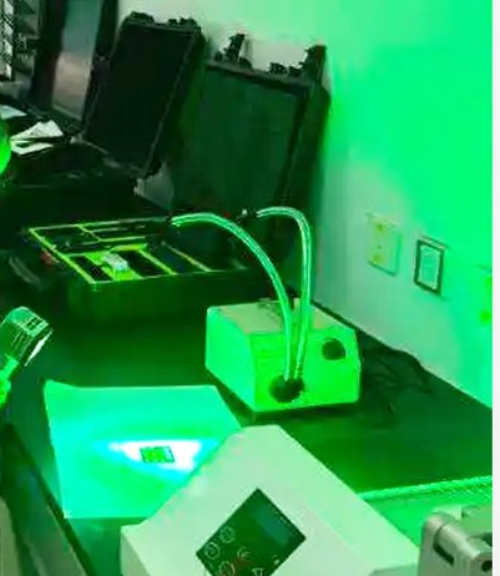
Fig. 9 Optical windows for testing instruments
Conclusion
In optical systems the selection of material and design of the optical window prioritises an exact balance between light transmittance, mechanical strength and environmental compatibility. The material systems based on fused silica, sapphire and zinc selenide have achieved precise optical tuning across the wavelength range from ultraviolet (200 nm) to long-wave infrared (14 μm) through rigorous control of crystal structure (for example, ultra-violet transmittance of high-purity silicon dioxide), coating techniques (for example, antireflection and corrosion-resistant coatings) and precision machining processes (for example, surface roughness controlled in the sub-nanometre domain). In extreme applications, the precise matching of material properties to technical requirements is paramount: optical systems in aerospace rely on the low coefficient of thermal expansion of fused silica (0.05×10⁻⁶/°C) and its radiation resistance to ensure imaging stability in space probes; medical endoscopes utilise biocompatible magnesium fluoride windows (in accordance with ISO 10993) to achieve 92% transmittance in the visible range while minimising the risk of tissue rejection; high-energy lasers mitigate thermal lensing by employing gradient-doped ZnSe material (damage threshold >5 J/cm² @10.6 μm). The current technological framework demonstrates that performance improvements in optical windows are grounded in the convergent application of material science, optical engineering and precision manufacturing, and their cross-disciplinary applications in fields such as space research, biomedicine, defence and security provide reliable support for the operation of optoelectronic systems in complex environments.
Stanford Advanced Materials (SAM) is dedicated to the manufacture of high-performance optical window sheets through advanced material science and precision engineering. We provide tailored solutions ensuring excellent light transmittance, mechanical strength and environmental compatibility for a variety of applications.
Further Reading:

 Bars
Bars
 Beads & Spheres
Beads & Spheres
 Bolts & Nuts
Bolts & Nuts
 Crucibles
Crucibles
 Discs
Discs
 Fibers & Fabrics
Fibers & Fabrics
 Films
Films
 Flake
Flake
 Foams
Foams
 Foil
Foil
 Granules
Granules
 Honeycombs
Honeycombs
 Ink
Ink
 Laminate
Laminate
 Lumps
Lumps
 Meshes
Meshes
 Metallised Film
Metallised Film
 Plate
Plate
 Powders
Powders
 Rod
Rod
 Sheets
Sheets
 Single Crystals
Single Crystals
 Sputtering Target
Sputtering Target
 Tubes
Tubes
 Washer
Washer
 Wires
Wires
 Converters & Calculators
Converters & Calculators
 Write for Us
Write for Us
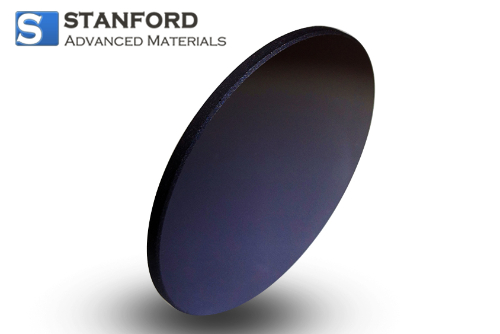
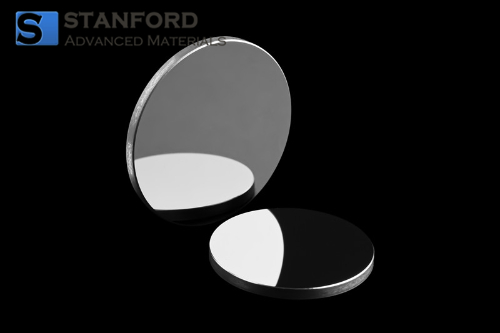
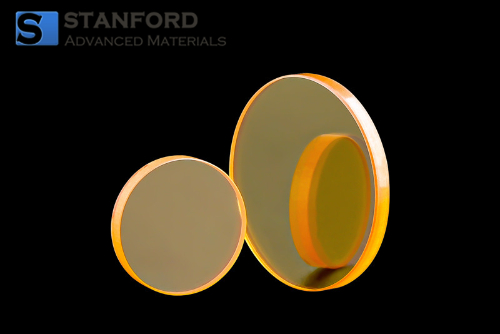
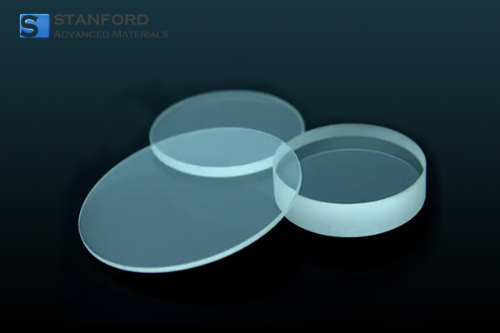
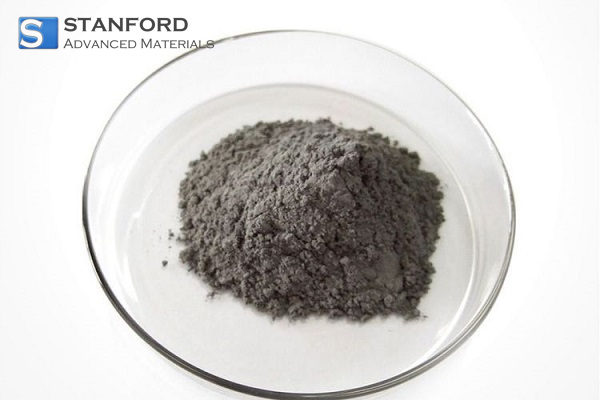
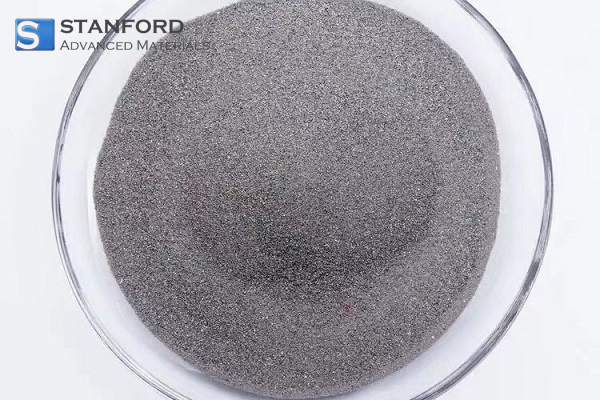

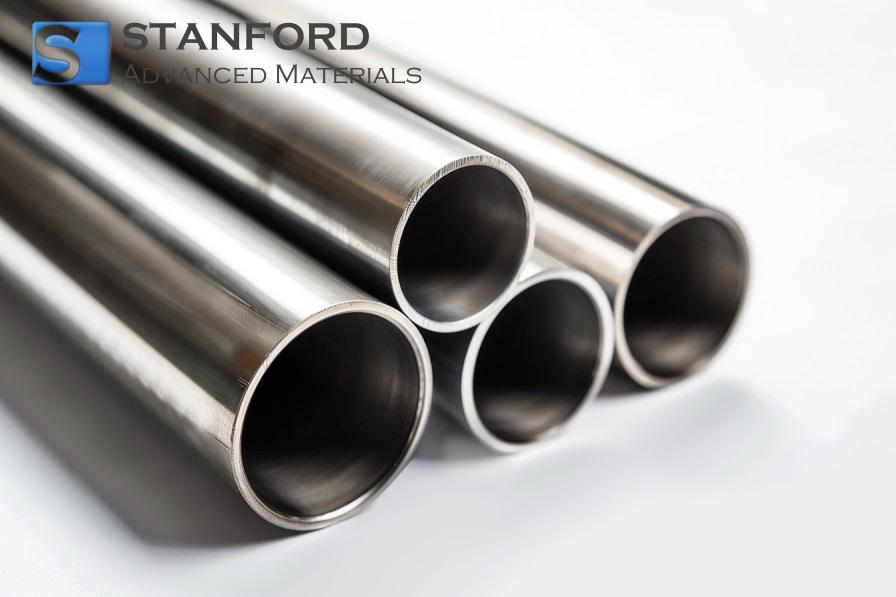
 Chin Trento
Chin Trento



